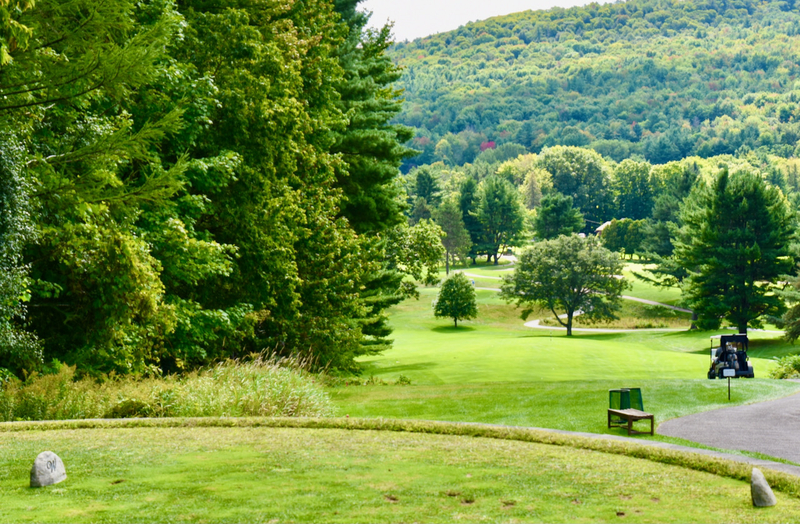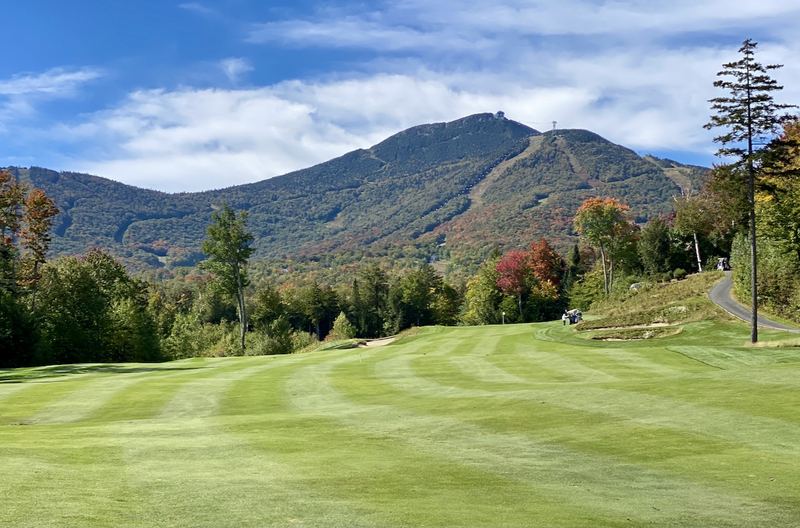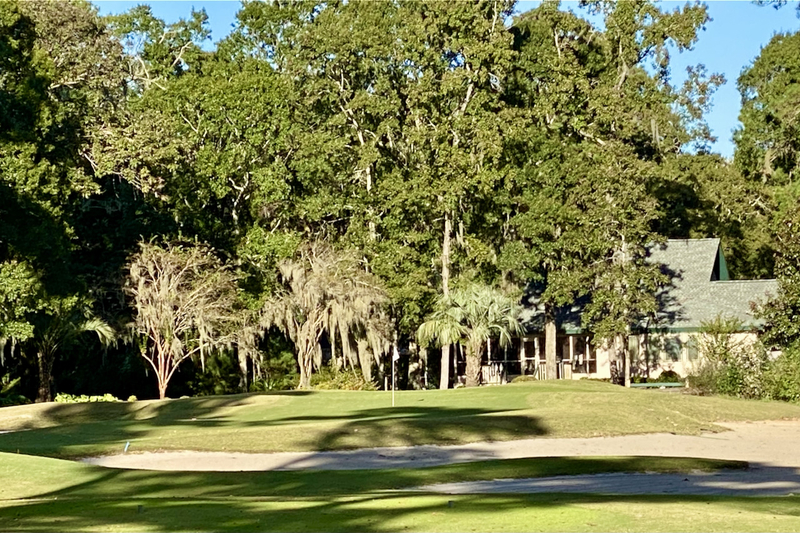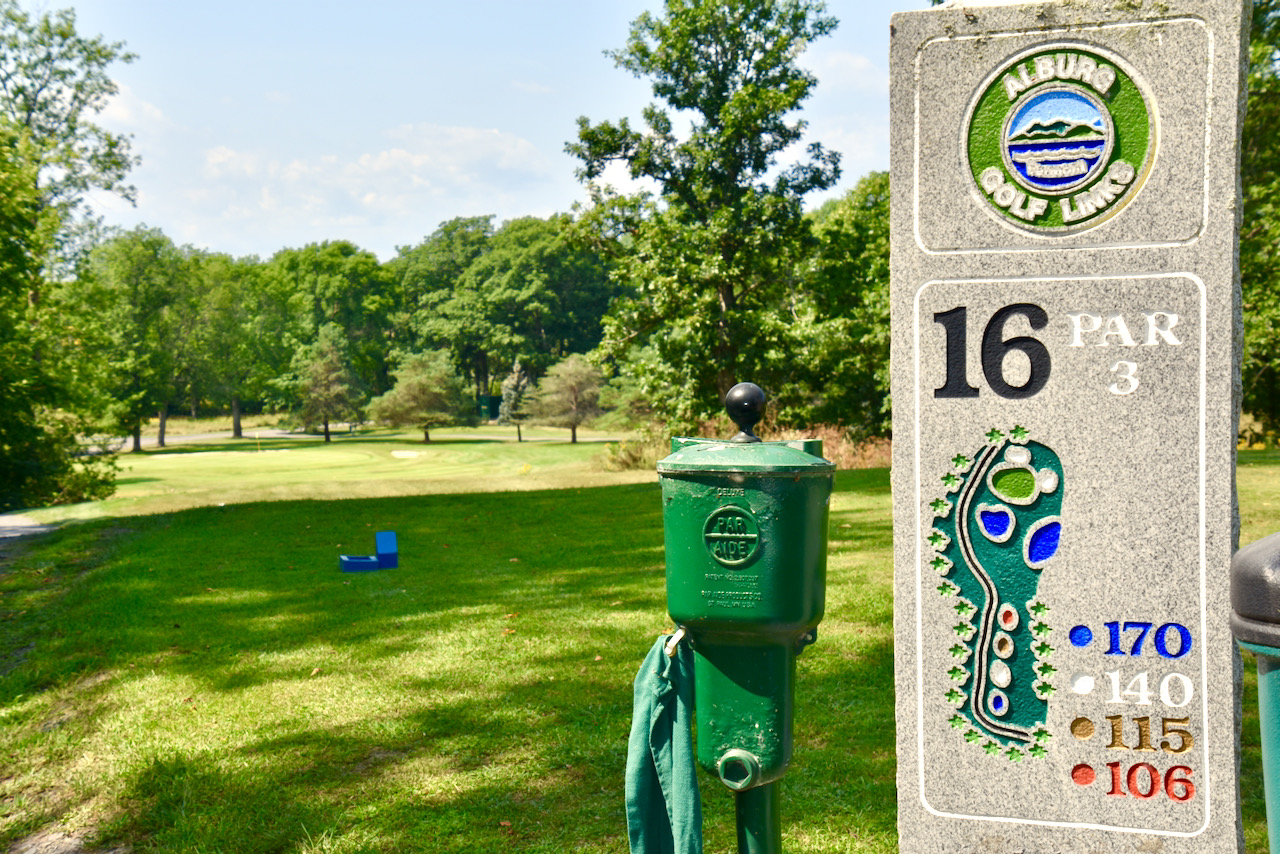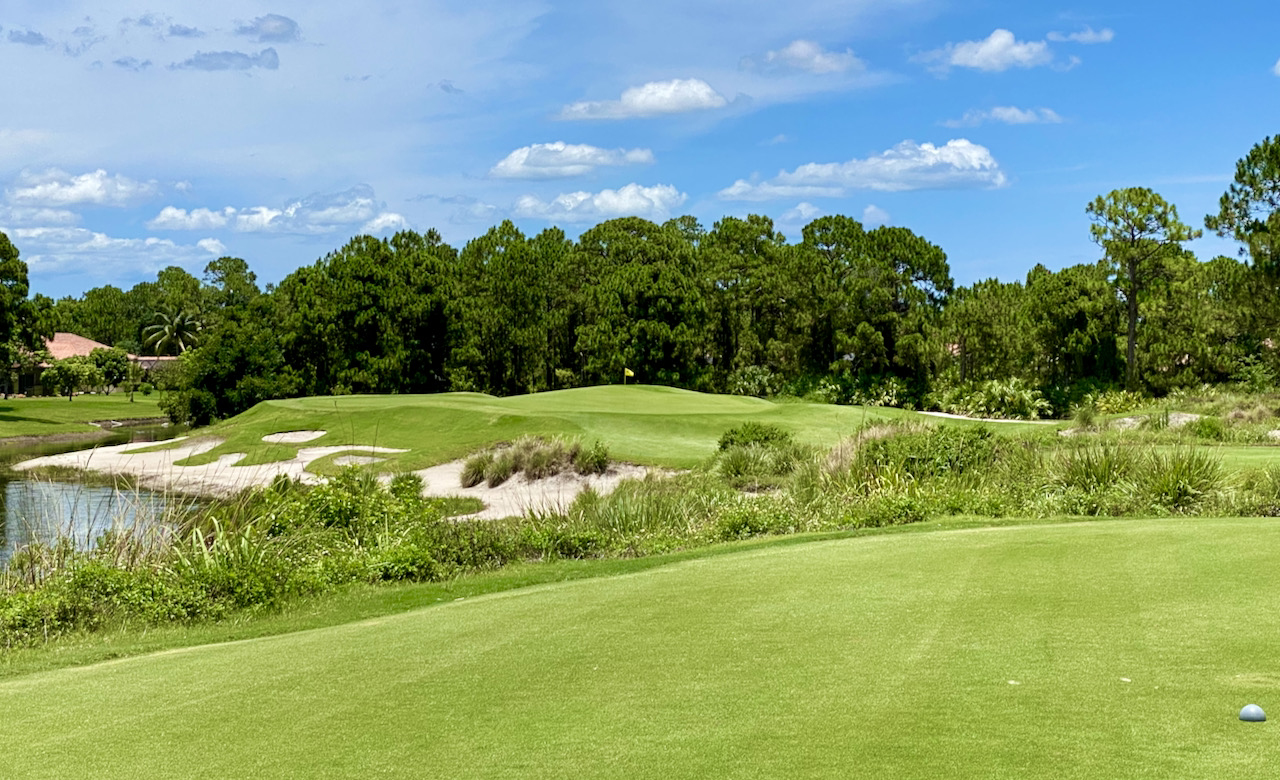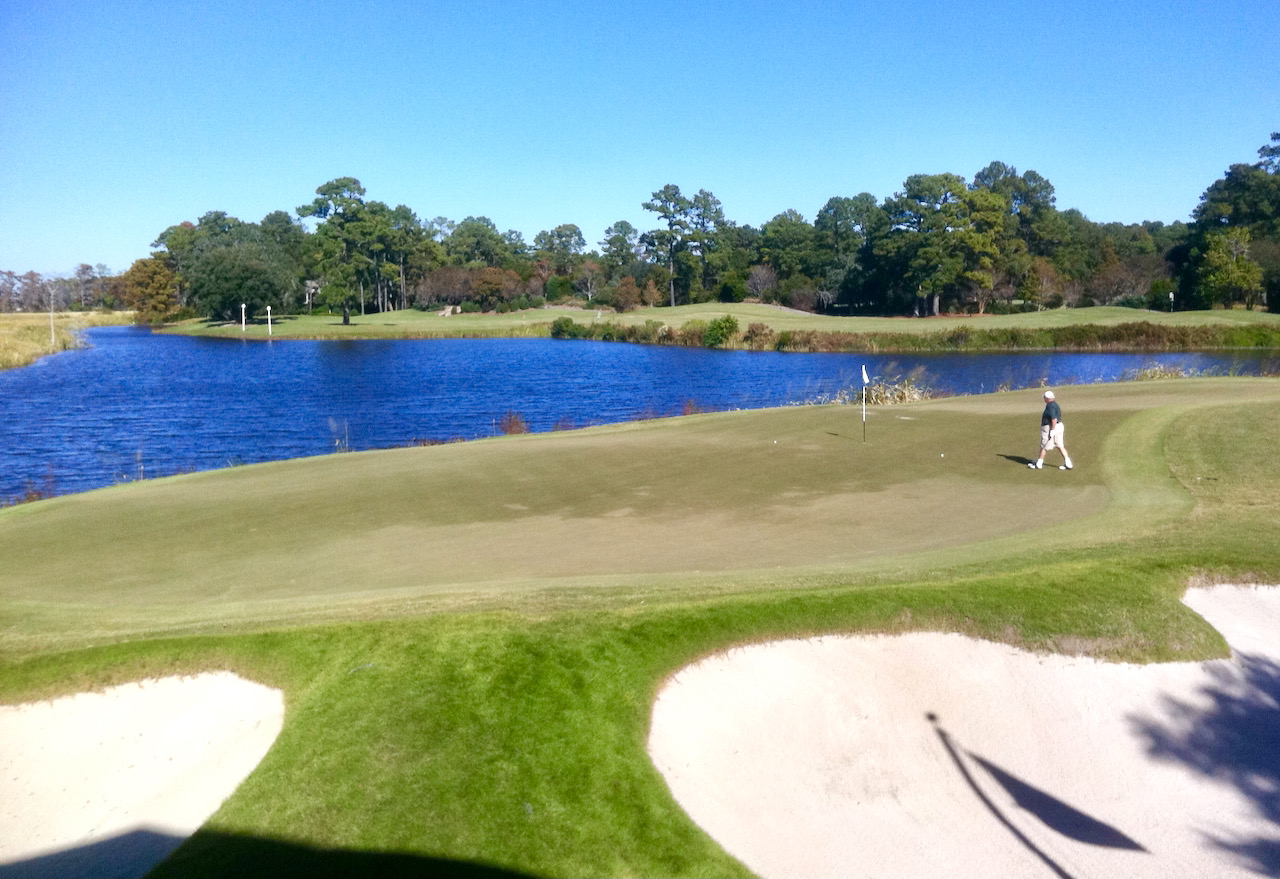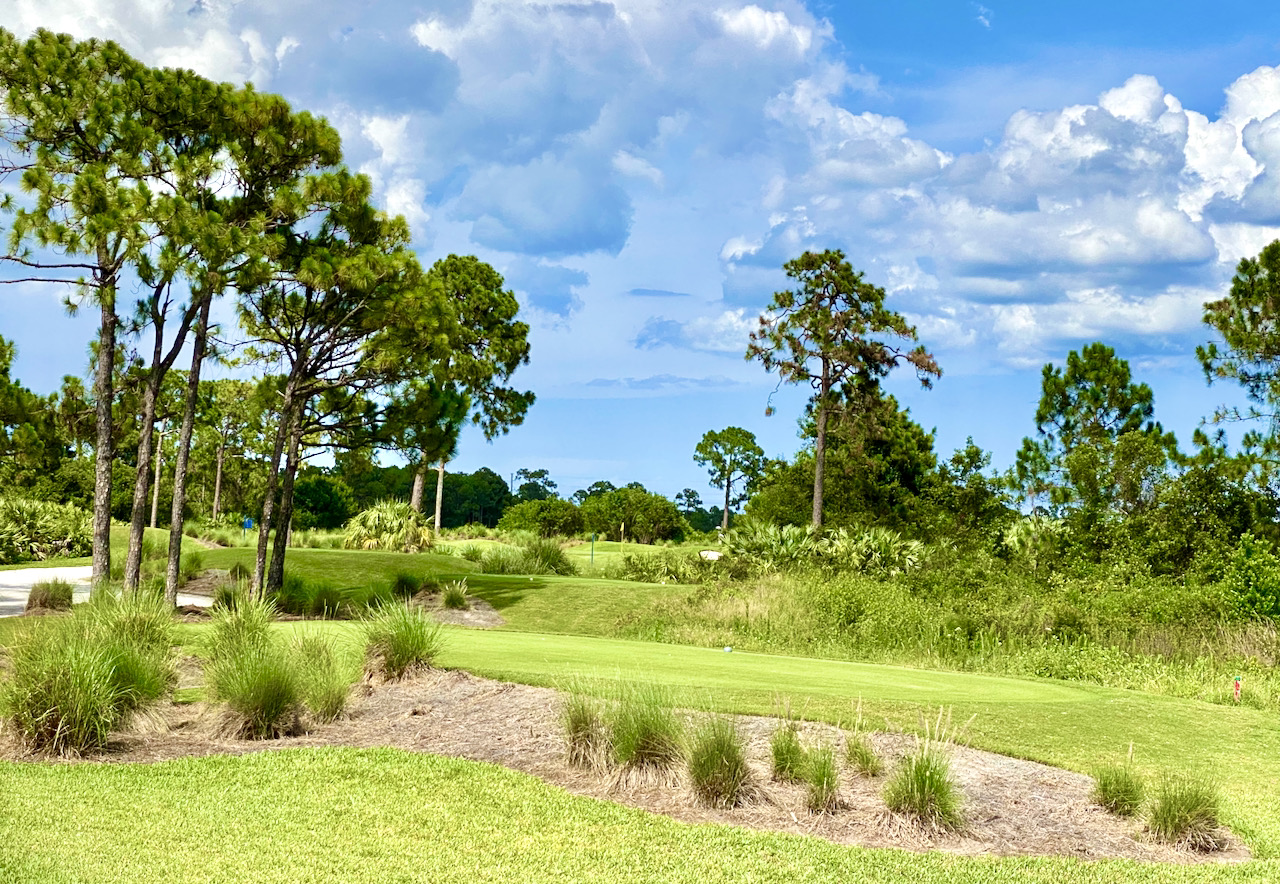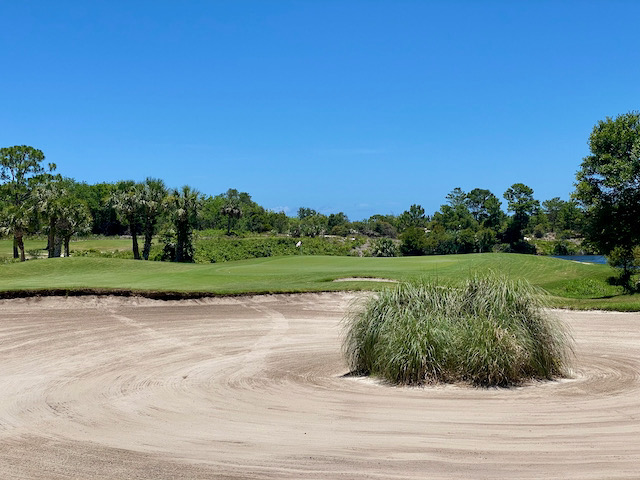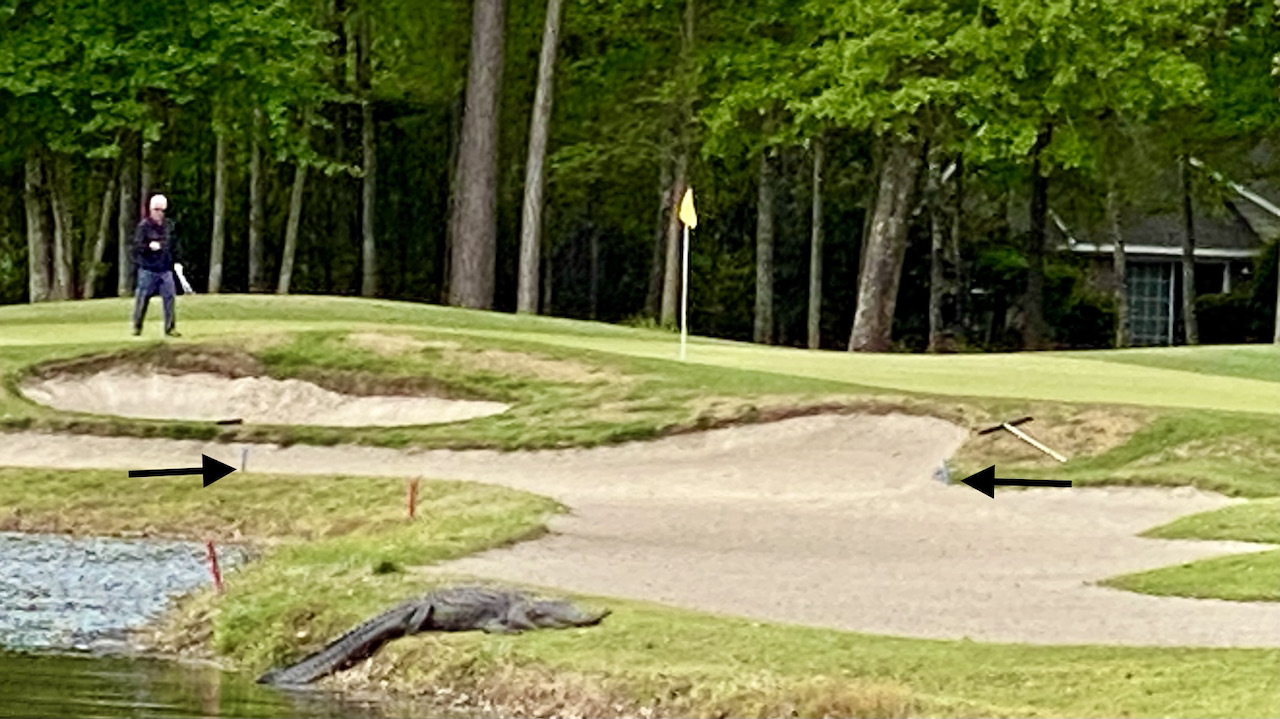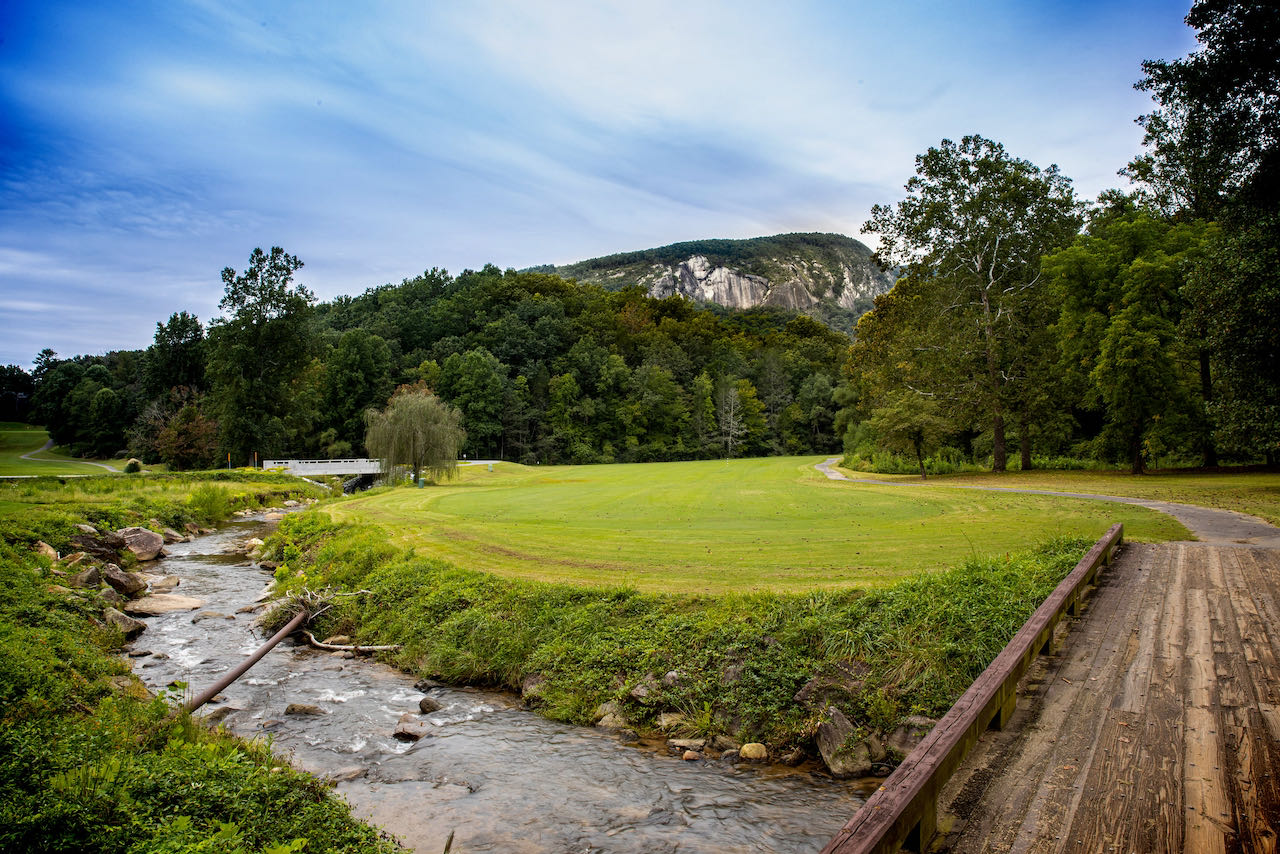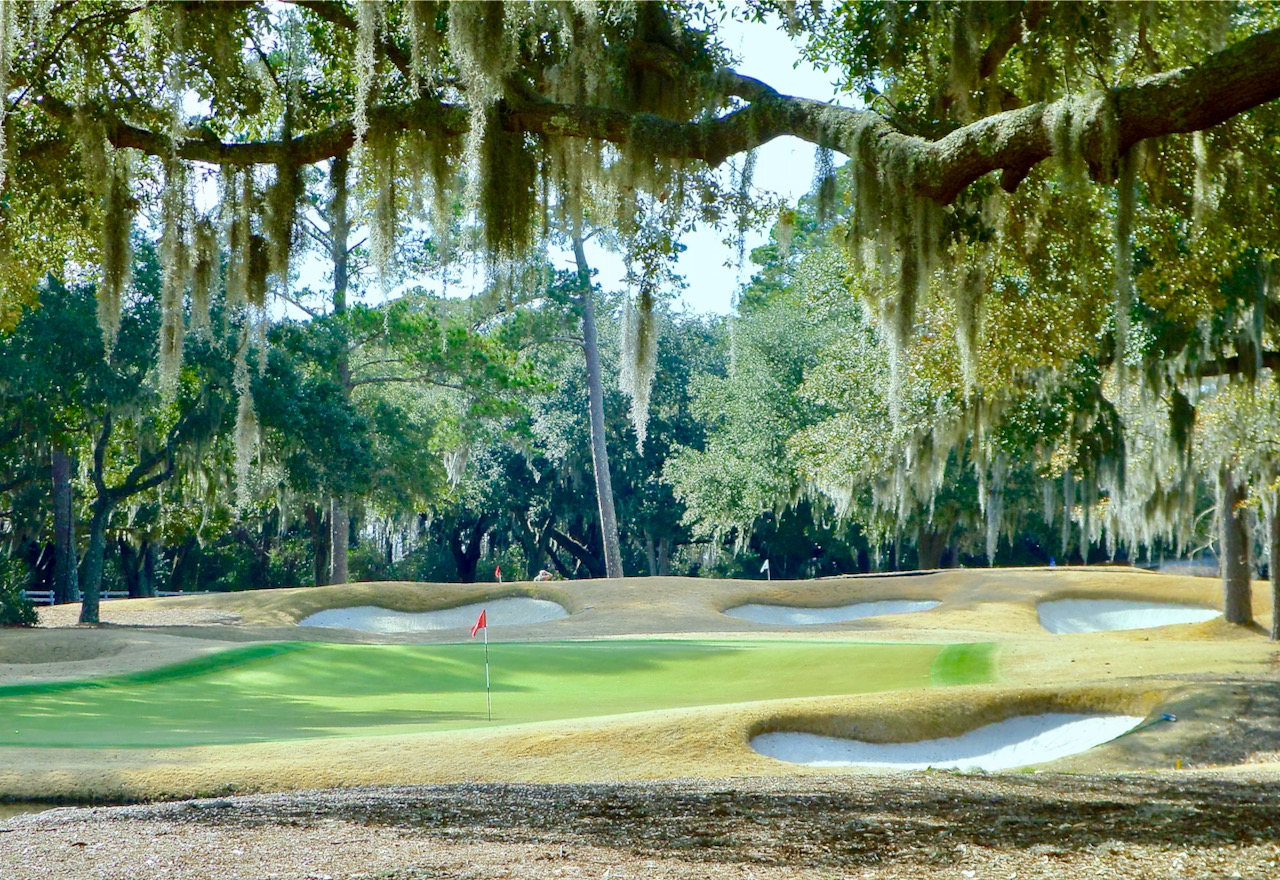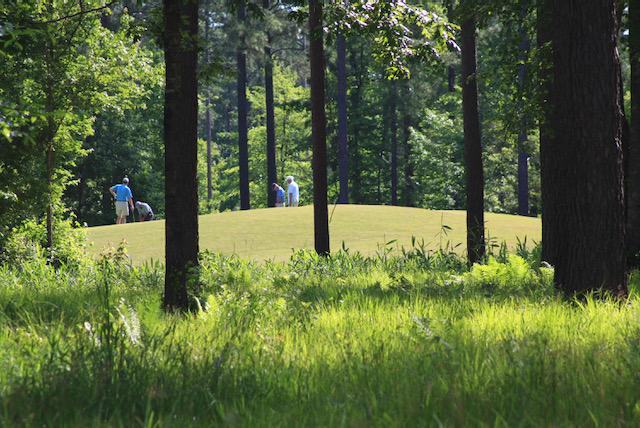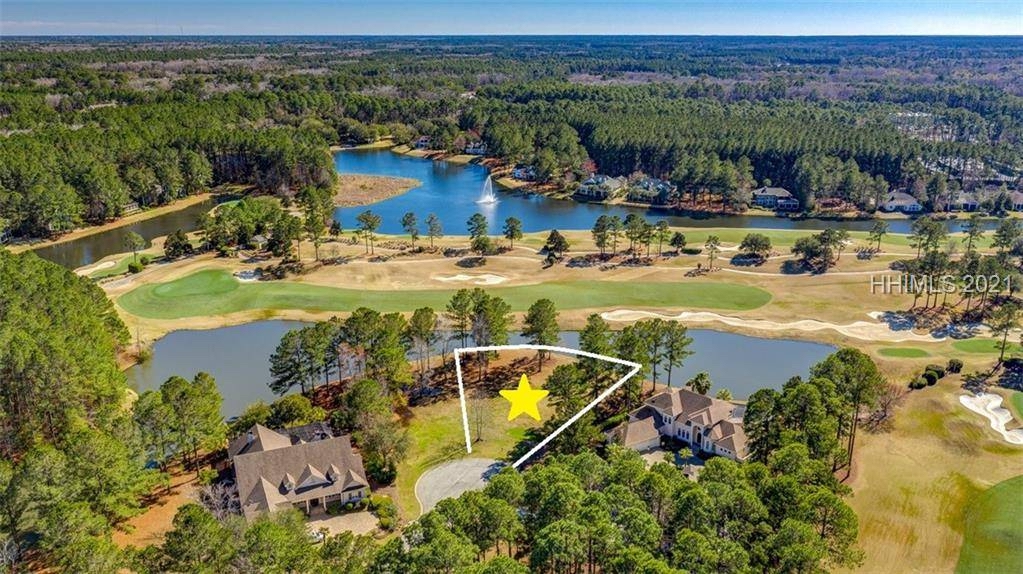My friend and itinerant golf partner, Bob Harris, and I spent the last two days playing golf in extreme heat in the Carolinas. Greens suffer mightily during hot and dry spells, but at least one golfer suffered more trying to putt on them. I consider myself a decent putter, but I left some 20-foot putts six feet short, and others I banged by the hole a like distance. At times I thought I had them figured out, but slow greens, at least for me, are tougher to putt than fast ones, despite what the TV golf commentators might say.
Caution, of course, is the byword for golf course superintendents during the dog days of Carolina summers. Greens are mowed only slightly to ensure they don’t brown out on days when the sun beats down and temperatures push the 100-degree mark and don’t leave the 80s overnight. But I was surprised to learn that the furry consistency of the greens of the Carolinas in summer is as much about horticulture as it is superintendent paranoia. As they say of corn in Iowa during the growing season, you can almost hear the grass grow on golf courses during a hot southern summer.
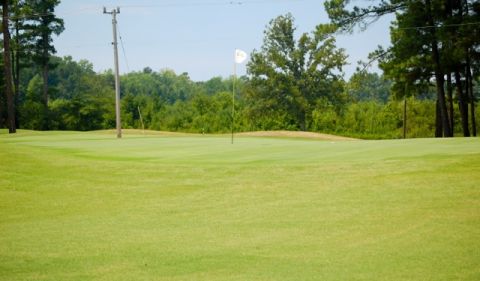
The 11th green at Pine Crest, like most of the others on the Donald Ross/Dick Wilson course, was crested, undulating and slow in mid-90 degree heat.
“It is the rapid grass growth more than the cut we put on the greens,” said golf professional and co-owner Dwight Gane of Pine Crest Country Club. Pine Crest, in Lumberton, NC, was the first stop on our two-day golfing trip. Gane estimated the stimpmeter reading on the greens at Pine Crest was around 8, which is just a bit faster than, say, putting entirely through fringe; over the winter months, course superintendent and co-owner Chris Jackson will have them up around 10, still not lightning, but on and around Pine Crest’s tricky green complexes, that will be fast enough. Records indicate Donald Ross laid out the blueprints for the greens at Pine Crest in the 1940s, as an accommodation to a local businessman and member of the club, and the “Crest” in the club’s name could as easily apply to the siting of the greens as to any other topographical quality. In winter when the greens are at normal length, they should be a treacherous delight.
Pine Crest’s original nine holes opened for play in 1929. Dick Wilson, whose many architectural credits include the famed Blue Monster at Doral in Florida, designed a second nine in the 1950s and did an excellent job of mimicking the Rossian style, at least for the additional nine greens. If Gane had not pointed them out, we would have been hard pressed to separate the Wilson holes (1 thru 3, 8 thru 11 and 17 & 18) from the Ross holes. As typical of Ross courses, all the action at Pine Crest is on and around the greens; the fairways are more than generous, posing few obstacles other than the pine trees that line many of the fairways. (I’ll have additional comments and photos of Pine Crest in coming days.)
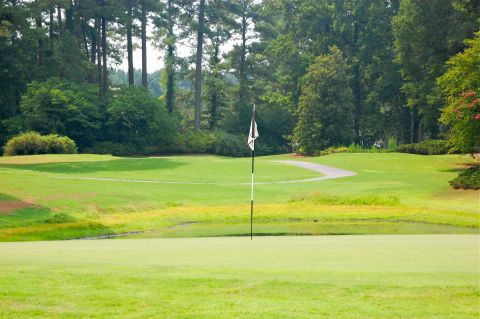
In fall and winter, a putt from the back of #12 at Country Club of South Carolina to a front pin position has a chance to trickle down the steep false front and toward the pond. But in summer, you will really have to slam your putt to get it past the hole.
I will say this about Pine Crest’s furry greens: They were uniformly slow, with no surprises one to the next. On Wednesday, we played the Country Club of South Carolina in Florence after a pleasant overnight stay in one of their condos, and the grass on some of the greens, perhaps because of a difference in topography (fewer trees, more water), had grown at somewhat different rates. Also, it was another six degrees warmer than at Pine Crest. We noticed at 8:30 a.m. that only one other group had signed up to play that day, and we jumped out before 8:30 a.m. to beat them and the heat (predicted to reach 102 in early afternoon). We had the Ellis Maples designed course (and the restaurant at our post-round lunch) all to ourselves –- I don’t think the 8:30 twosome showed up –- and we thoroughly enjoyed not only the pace of play but also the layout. As for the greens, they too were slow but inconsistently so; well into the round, some 30 foot putts I thought I hit properly wound up blowing past the hole by 10 feet. Though frustratied, I blame Mother Nature. I look forward to playing the fine CC of South Carolina course in more “normal” weather and to sharing some additional thoughts and photos here in the coming days.







